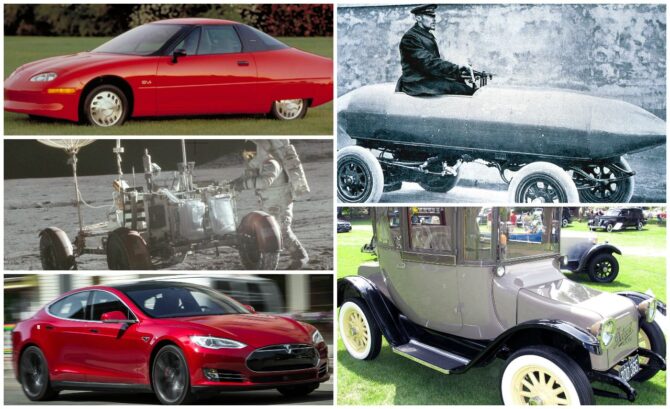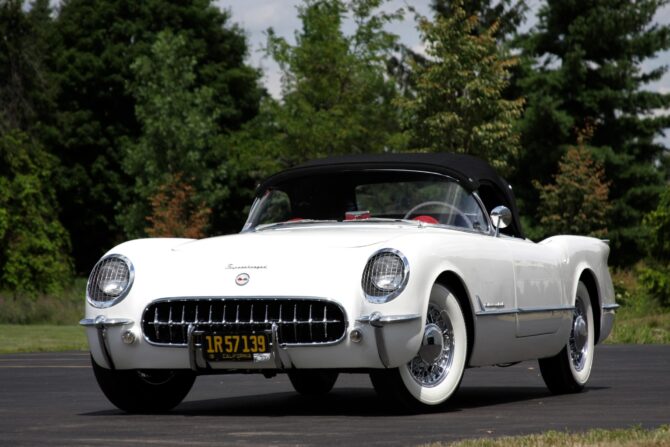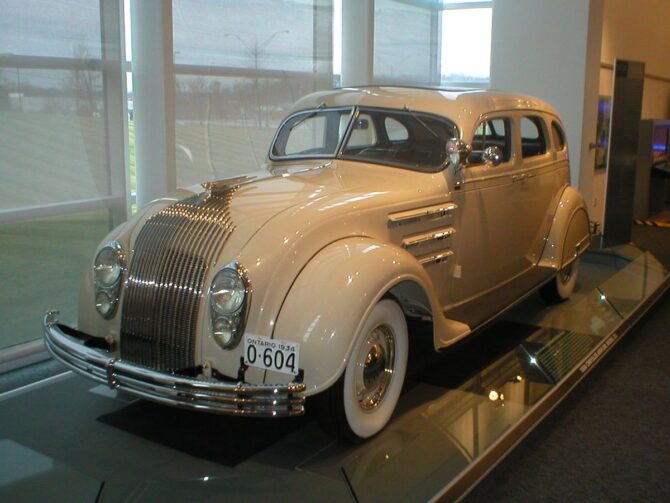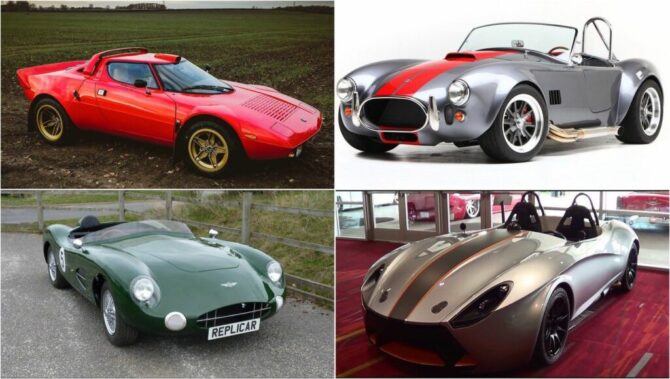
For many car enthusiasts, classic cars are more than just vehicles – they are works of art that tell a story. From the sleek curves of the 1950s to the boxy designs of the 1980s, classic cars have undergone significant changes in their designs over the years. Taking a journey through the history of automotive design reveals not just the evolution of style but also the cultural and technological changes that have shaped the industry.
From the early days of the automobile to the present day, classic car designs have been influenced by factors such as social norms, economic conditions, and technological advancements. In this article, we will explore the evolution of classic car designs and take a closer look at the key milestones that have shaped the industry over the years. So, buckle up and get ready to take a trip through automotive history!
The Early Years of Automotive Design

Source: caranddriver.com
The history of classic car design dates back to the late 1800s when the first automobiles emerged. At the time, these vehicles were bulky, slow, and lacked any real sense of style. In fact, many of the early cars resembled horse-drawn carriages with engines attached to the back. However, as the automotive industry began to grow, so did the need for more functional and aesthetically pleasing designs.
One of the earliest examples of this was the 1901 Mercedes 35 hp, which featured a sleek, aerodynamic design that was far ahead of its time. This car was designed to be driven at high speeds, and its smooth lines and low profile allowed it to cut through the air with minimal resistance. Over the next few decades, other car manufacturers began to experiment with more streamlined designs, leading to the emergence of iconic car designs that still inspire awe today.
The Emergence of Iconic Car Designs
One of the most iconic car designs of the early 20th century was the Ford Model T. This car was produced from 1908 to 1927 and was the first car to be mass-produced on an assembly line. The Model T featured a simple, boxy design that was easy to manufacture and maintain, making it a popular choice for the average American. However, it was not until the 1920s and 1930s that car designers really began to push the boundaries of what was possible with automotive design.
During this time, cars such as the Bugatti Type 57SC Atlantic and the Alfa Romeo 8C 2900B emerged, featuring sleek, futuristic designs that were unlike anything that had been seen before. These cars were often hand-built and featured intricate details such as chrome accents and aerodynamic curves. They were symbols of wealth and power, and owning one was a status symbol.
Classic Car Design in the 1950s and 1960s

Source: supercars.net
The 1950s and 1960s were a time of great change in the automotive industry. The post-war economic boom led to an increase in car ownership, and car manufacturers began to experiment with new designs and technologies. This era saw the emergence of some of the most iconic classic cars of all time, including the Chevrolet Corvette, the Ford Thunderbird, and the Volkswagen Beetle.
These cars were often characterized by their sleek, curvaceous designs and bright, bold colors. They were symbols of the optimism and prosperity of the time, and their designs reflected the desire for fun, freedom, and individuality. Many classic car enthusiasts consider the 1950s and 1960s to be the golden age of automotive design, and it’s easy to see why.
The Muscle Car Era of the 1970s
The 1970s saw a shift in classic car design as car manufacturers began to focus more on performance and power. This era saw the emergence of the muscle car, a type of car that was designed to be fast, powerful, and loud. Cars such as the Pontiac GTO, the Dodge Charger, and the Ford Mustang became icons of the era, and their designs reflected the desire for speed and performance.
Muscle cars were often characterized by their large, powerful engines, bold stripes and graphics, and aggressive styling. They were designed to be driven fast and hard, and their designs reflected this. However, the oil crisis of the 1970s led to a decline in the popularity of muscle cars, and by the end of the decade, their designs had begun to change.
Classic Car Design in the 1980s and 1990s

Source: vox.com
The 1980s and 1990s were a time of transition for classic car design. The oil crisis of the 1970s had led to a focus on fuel efficiency and smaller, more practical cars. However, car manufacturers still recognized the appeal of classic car designs, and many began to incorporate elements of classic designs into their new models.
Cars such as the Classic Defender, Porsche 911, the BMW M3, and the Mazda RX-7 emerged, featuring sleek, aerodynamic designs that were reminiscent of classic cars from the 1960s. These cars were often characterized by their clean lines, sharp angles, and high-performance engines. They were a reflection of the changing times and the desire for practicality and performance.
Modern Takes on Classic Car Designs
In recent years, there has been a resurgence of interest in classic car designs. Many car manufacturers have begun to produce modern takes on classic designs, incorporating the latest technologies and materials into their designs. Cars such as the Dodge Challenger, the Ford Mustang GT, and the Chevrolet Camaro SS have all been updated with modern features, but their designs still pay homage to the classic cars of the past.
These modern takes on classic car designs often feature updated engines, advanced safety features, and state-of-the-art infotainment systems. They are a reflection of the enduring appeal of classic car designs and the desire to combine the best of the past with the latest technologies.
The Future of Classic Car Design

Source: techjournal.org
The future of classic car design is an exciting one. As new technologies and materials emerge, car designers will have more tools at their disposal than ever before. It’s likely that we’ll see more hybrid and electric classic cars in the future, as well as cars that incorporate advanced autonomous driving systems and other cutting-edge technologies.
However, despite these advances, classic car designs will always have a place in the hearts of car enthusiasts. The timeless elegance and beauty of classic cars will continue to inspire future generations of car designers, and we can expect to see many more modern takes on classic designs in the years to come.
Maintaining and Restoring Classic Cars
Maintaining and restoring classic cars is a hobby that has been enjoyed by car enthusiasts for decades. Classic cars require a different kind of maintenance than modern cars, and it’s important to have a good understanding of how they work in order to keep them in top condition.
Restoring a classic car can be a time-consuming and expensive process, but for many car enthusiasts, it’s a labor of love. Restoring a classic car involves stripping it down to its bare frame and rebuilding it piece by piece. It requires a great deal of skill and patience, but the end result is a car that is a true work of art.
Conclusion
The evolution of classic car designs is a journey through automotive history. From the early days of the automobile to the present day, classic car designs have been influenced by factors such as social norms, economic conditions, and technological advancements.
The enduring appeal of classic car designs is a testament to the timeless elegance and beauty of these vehicles, and it’s likely that we’ll continue to see modern takes on classic designs in the years to come. So, whether you’re a fan of the sleek curves of the 1950s or the boxy designs of the 1980s, there’s no denying the impact that classic car designs have had on the automotive industry and on our culture as a whole.



